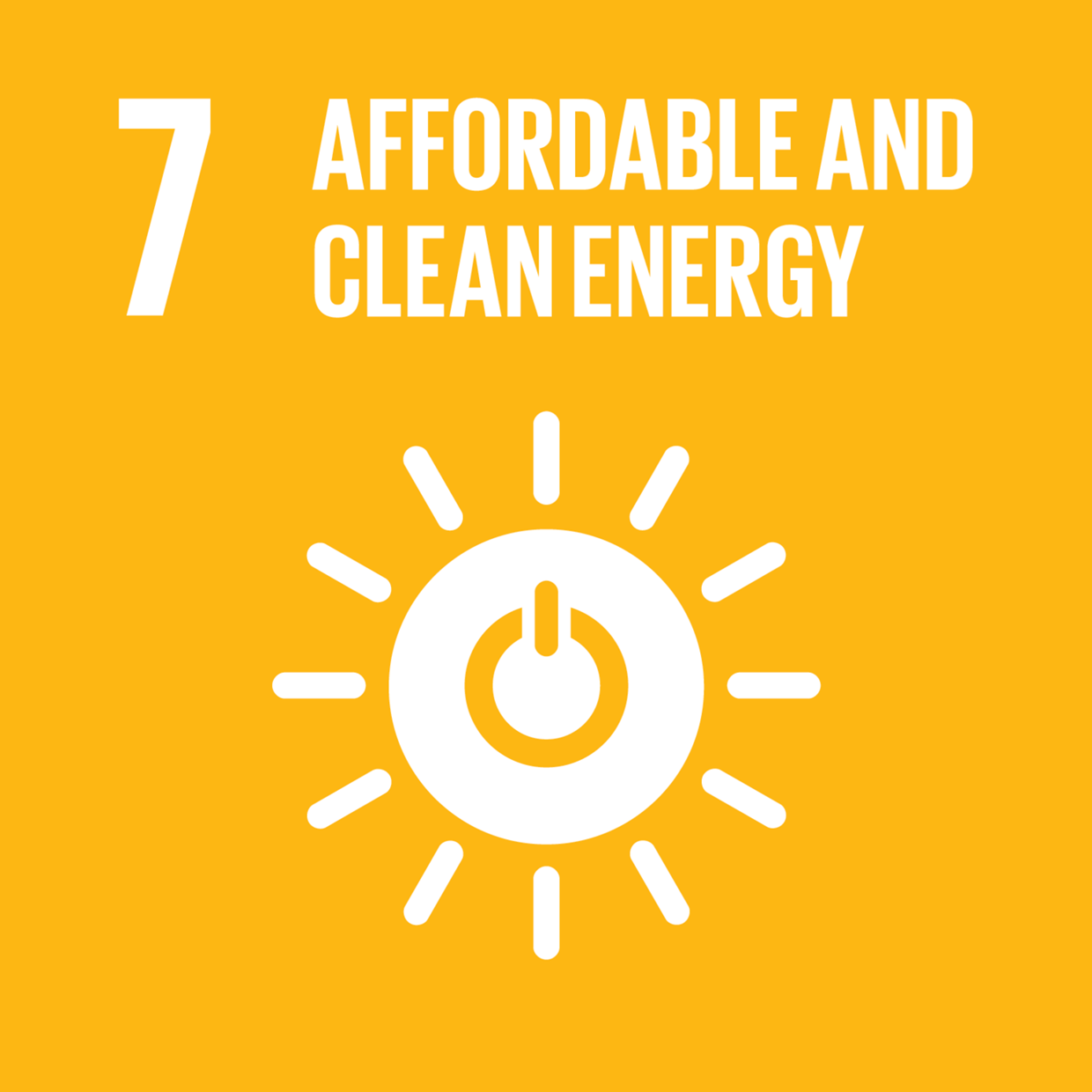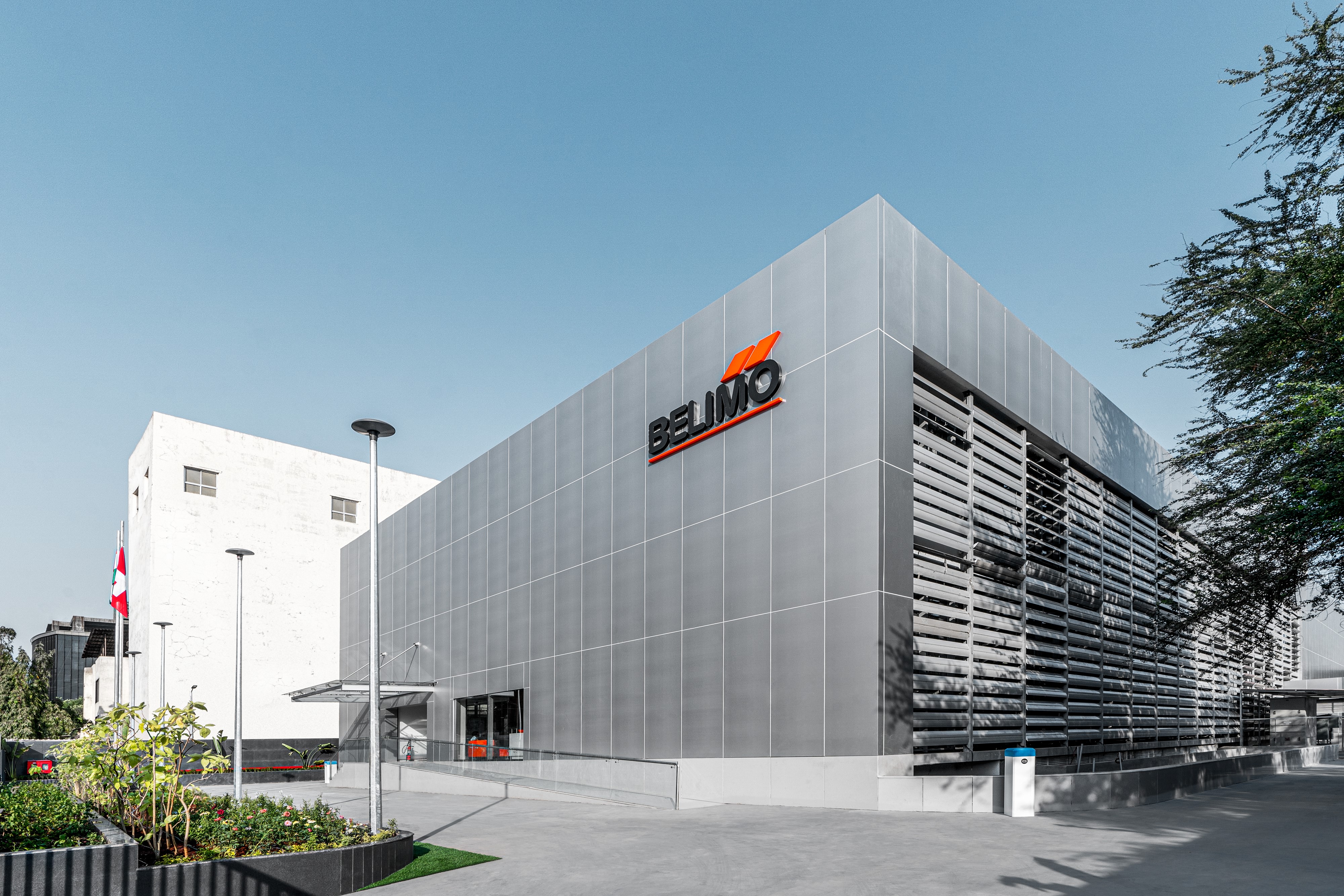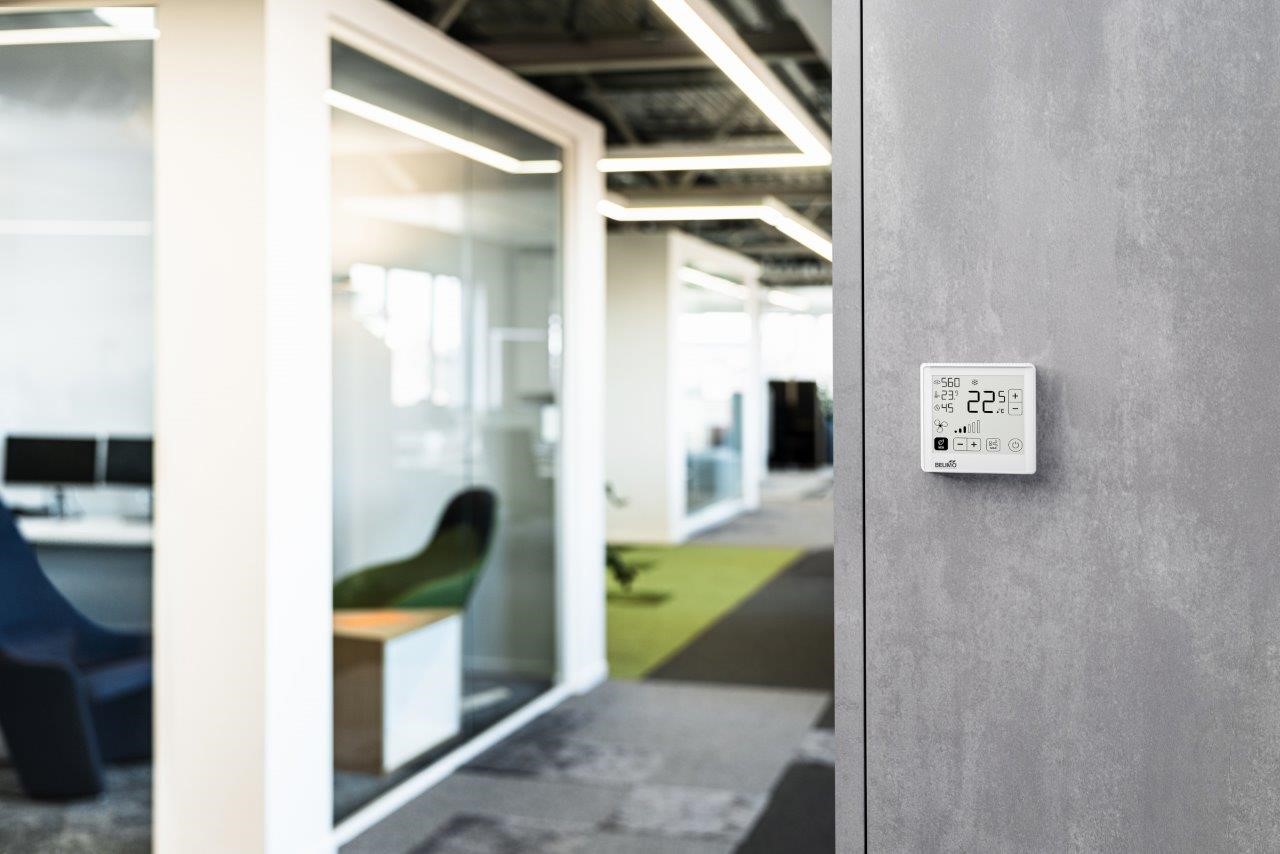Customer Value
High-Performance Solutions for Energy Efficiency and Indoor Air Quality
Our impact model quantifies the energy savings of Belimo products in the field.
Heating, ventilation, and air-conditioning systems (HVAC) are designed to create comfort and a safe and healthy indoor environment. However, to accomplish this, these kinds of systems consume approximately 40% of all the energy used in buildings. Thereof, we estimate that two thirds of the energy are used for cooling, one third for heating purposes.
Building automation and control systems not only optimize the parameters of indoor comfort but can also substantially reduce energy consumption. To quantify the energy leverage of its field devices and assess their impact over the entire lifecycle of a typical HVAC system, Belimo established an impact model in 2019. This allows us to better understand where energy optimizations in our value chain have the strongest leverage.
Introducing a New ISO-Standard
During the period under review, the EN ISO 52120-1:2022 standard was substituted for the standard EN 15232-1:2017 used to calculate energy savings in our impact model. The four underlying classes of building automation and controls systems and their effect on energy savings have, however, remained unchanged: between 29% (Class C) and 55% (Class A) in comparison with systems without controls.
In 2022, the weighted average impact of an air-side and water-side actuator multiplied by the number of actuators shipped (2022: 5.6 million air-side and 2.4 million water-side actuators) equaled savings of 8.4 million tons of CO2e in the application. The ratio of the energy-saving impact of a Belimo device in the field compared with all input factors has remained stable at 24.
Belimo has structured its energy-impact model along six lifecycle steps:
- Resources: The model considers “gray” energy content included in materials used to build a typical field device (steel, copper, aluminum, plastics, electronics, and cardboard).
- Manufacturing: Also considered in our model is the energy needed to manufacture, assemble, and test the field devices.
- Distribution: The model considers the average amount of transportation energy needed to deliver a Belimo field device to the customer.
- Operation: The model then calculates the energy a Belimo field device uses during operation, taking into account the energy used in standby mode and when it is actuated.
- Energy Savings: Even though typical HVAC systems operate much the same across the world, significant variations arise due to differences between climate zones and power generation. Annual energy savings are therefore calculated based on the consumption of a typical HVAC system that operates with a global average heating and cooling load profile and with typical electrical power consumption.
- Recycling: Belimo strives to minimize waste generated at the end of life of its products. This often coincides with the end of life of an entire HVAC system and is difficult to manage and track.
To quantify our impact, the following levers and assumptions are key:
- The assumed lifetime: In our model, a conservative service life of 15 years is assumed. The actual lifetime is often 20 years or longer, made possible by the high quality and reliability of components used in Belimo actuators.
- The total leverage: The ratio of the energy-saving impact of a Belimo device in the field compared to all input factors. For air-side field devices, this ratio is 21 and for water-side field devices 31, with a weighted average of 24.
- The weighted CO2 impact of an air-side and water-side actuator: This figure (-1’103.25 kg CO2e) multiplied by the number of actuators shipped per year equals the total tCO2 savings of Belimo field devices.
- The applicable efficiency class of Belimo devices: Each efficiency class stipulated by EN ISO 52120-1:2022 exhibits a different energy savings factor during operation, ranging from 55% (A types) to 29% savings (C types). For its field devices, Belimo assumes a distribution of 30% A types, 60% B types and 10% C types.
In 2022, Belimo established the “Belimo Climate Foundation.” Its purpose is to contribute to the reduction of CO2 emissions from buildings and to make society aware of the great leverage that building automation and controls systems have with respect to achieving climate targets through building renovations. The foundation identifies projects for increasing energy efficiency in buildings housing non-profit institutions and non-governmental organizations and supports them in optimizing their HVAC systems. By implementing these projects, the aim is not only to reduce CO2 emissions but also to transfer knowledge and increase awareness of the potential for energy reduction in buildings (read our press release for more information).
 SDG 7: UN Sustainable Development Goals Approach
SDG 7: UN Sustainable Development Goals ApproachBuildings and their HVAC systems play a critical role in the doubling of the global rate of improvement in energy efficiency stipulated by SDG target 7.3. An estimated 30% of all energy used in buildings is lost due to insufficiently controlled systems. By providing smart HVAC-controls, Belimo makes an active contribution to SDG 7 “Ensure access to affordable, reliable, sustainable, and modern energy for all”.
 SDG 13: UN Sustainable Development Goals Approach
SDG 13: UN Sustainable Development Goals ApproachBuildings are responsible for 40% of worldwide energy consumption and for the climate changes caused by their CO2 emissions. Thereof, another 40% is consumed by HVAC systems. The application of Belimo products save energy in HVAC systems in buildings, thereby creating measurable sustainability benefits and significantly contributing to SDG 13 “Climate Action”.


